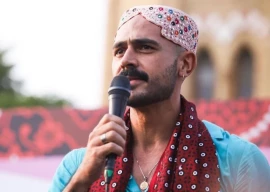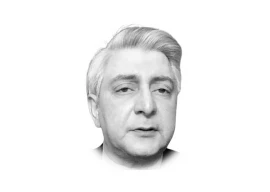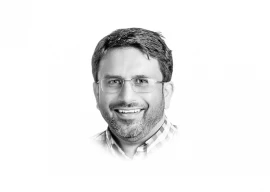
Even though she is 17-year- old, Naheed Akhtar stands only 34 centimeters tall. Nor is she the only one in her family to suffer from such a condition. Four out of her nine siblings, aged 7 to 17, all share the same predicament, their height stunted and the bones of their hands and feet deformed.
Not a single one of them is taller than three feet. To add to the misery, when Naheed was brought to hospital a few days back, initial diagnosis showed that three valves of her heart were blocked.
They all live in a single room kacha house along with their 53 year old father. A carpenter by profession, he used to earn his livelihood by making windows and doors but for the last over a year he has been home after developing a problem with his vision. Thus, treatment for this rare genetic disorder is a far-fetched dream for them.
This is the cruelty of fate which their father, Muhammad Irfan, a poor carpenter from village Mongan Machipol, Mansehra district, faces. This desperate father is looking towards philanthropists and the government for protecting the lives of his five physically challenged children who could die if not treated in time, and will need to be taken abroad, as facilities to treat this unusual disease are not available in Pakistan, physicians told the media here on Monday.
Aftab Ahmed 7, Adnan 12, Shumaila Bibi 10, Naseema 14 and Naheed 17, all suffer from the same illness. Their elder sister Shaheen, 24, died of the same disease about one and half months back, revealed Dr Jehangir Khan, assistant professor of Abbotabad‘s Ayub Medical College while talking to a visiting team of local newsmen.
The children all suffer from Diastrophic Dysplasia, a disorder of cartilage and bone development, particularly common in Finland. According to Dr Khan, it is a genetic disease and the growth of the bones of such patients gets obstructed and deformation takes place. He also said that no known cases of this unusual disease have been traced in Pakistan before this.
In Dr Khan’s opinion, heart and bone reconstructive surgeries could be carried out in Pakistan but diagnostic facilities to identify presence of these genes in their bodies are not available. He said that he was trying to approach some physicians abroad through internet so that these children could get proper treatment and their lives could be saved.
Dr Khan said that these children also need a near-continuous supply of oxygen for their survival, and that it is not possible for local hospitals to provide that kind of uninterrupted service.
In answer to a question, Dr Khan affirmed that all the children were psychologically healthy like normal children. He, however, was not sure about the life expectancy of such patients as he had come across such patients for the first time in his life. “But even if they remain alive, they could either develop a permanent disability for the rest of their live, and even transmit the disease to their next generation as it is a genetic disease,” he added.
A witness to the abject poverty of this family, Dr Khan urged philanthropists to come forward and support these children financially in order to help them get tested and treated abroad, along with providing them enough oxygen at home prior to sending them abroad.
Published in The Express Tribune, June 11th, 2013.

















COMMENTS
Comments are moderated and generally will be posted if they are on-topic and not abusive.
For more information, please see our Comments FAQ